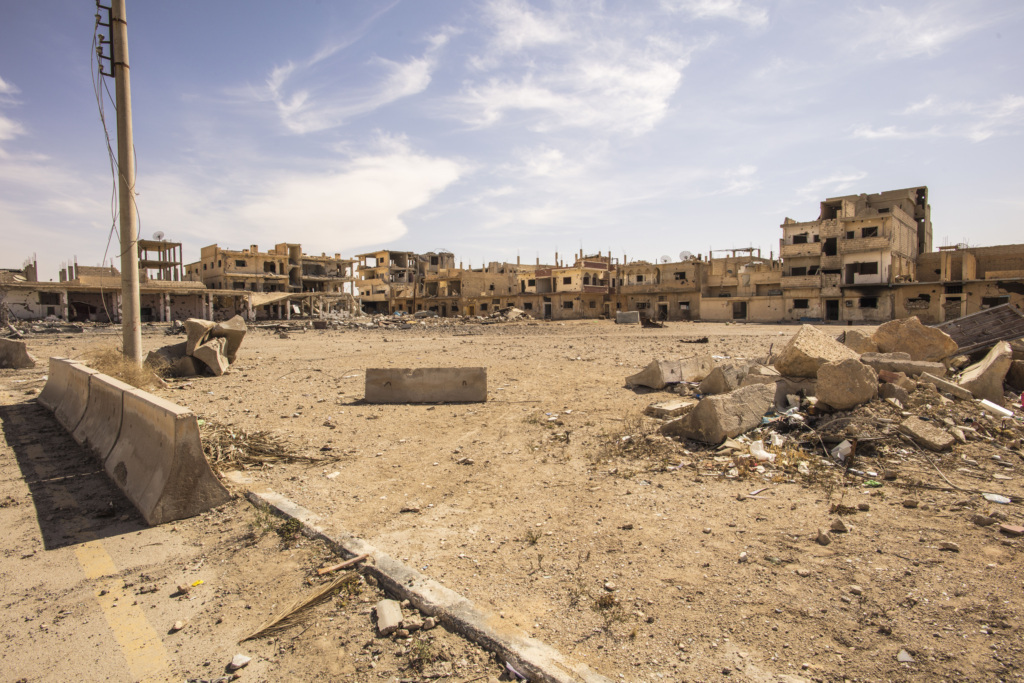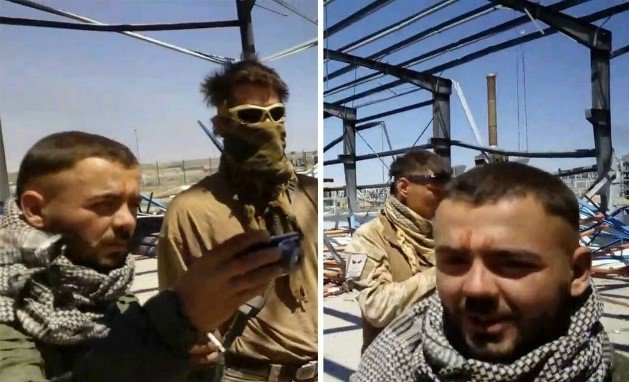
Syria
1,191
An internal report from 2018 listed a total of 1,191 Wagner personnel in Syria.
26
Wagner operated from approximately 26 bases in Syria, many doubling as oil fields, refineries, or training facilities.
$134,000,000
Despite U.S. sanctions, Evro Polis (a Wagner front company) generated $134 million in gross sales in 2020 alone from recapturing oilfields from ISIS during the Syrian Civil War.
BACKGROUND
The Wagner Group’s roots in Syria predate its official formation in 2014, with Wagner’s direct antecedents such as the Slavonic Corps operating in the country as early as 2013. This precursor group included many future Wagner commanders, including Dmitry “Wagner” Utkin himself. The Wagner Group, as we know it, took full form in Syria in 2015, after departing from the first stage of the Ukraine war. The group officially deployed to Syria in August 2015, preceding Russian President Vladimir Putin’s announcement of Russia’s intervention in the Syrian conflict in September 2015. Wagner forces were deployed to various governorates in Syria, including Al-Hasakah, Aleppo, Damascus, Deir ez-Zor, Hama, Homs, and Latakia, operating from approximately 26 bases, many of which doubled as oil fields and refineries or training facilities.
Backing Assad
Wagner formed a key part of a strategic military-economic nexus in Syria, supporting its leader Bashar al-Assad, a crucial Russian ally in the Middle East. Their activities included guarding oil and gas infrastructure, protecting construction firms of Putin allies such as oligarch Gennady Timchenko, and eventually engaging in direct combat against enemies of the Damascus government. Tasked with fighting ISIS before the arrival of the Russian army, Wagner fought alongside the Syrian Arab Army in the cities of Palmyra and Aleppo in 2016 and 2017. The group primarily used Khmeimim (also known as Hmeimim) Air Base in Jableh for transporting its forces and established a training center for Syrian fighters in the city of Salma, located in the Latakia Governorate.

War Profits from Oil and Gas
As with its operations in other countries, several companies linked to Yevgeny Prigozhin provided a smokescreen for the Wagner Group’s activities in Syria. The most significant was Evro Polis, which contracted with Assad’s government to capture and guard hydrocarbon infrastructure. In 2018, Syria’s state-owned oil company offered Evro Polis a 25 percent cut of earnings from oil and gas fields that the group freed from ISIS control, according to the Associated Press and the U.S. Treasury. Despite U.S. sanctions against the company, Evro Polis generated $134 million in gross sales and $90 million in profit in 2020 alone from recapturing oilfields from ISIS during the Syrian Civil War. Internal documents from 2018 revealed that Wagner had access to nine oil fields: five in Aj Jihar, two in Tadmor, one in Deir ez-Zor, and one in Aleppo. One internal report from 2018 listed a total of 1,191 Wagner personnel in Syria.
Significant Incidents and Controversies
One of Wagner’s most significant incidents in Syria was the Battle of Conoco in February 2018, also known as the Battle of Khasham or the Red February Massacre. Wagner fought against U.S.-led coalition forces near the Conoco gas field, resulting in heavy losses. This attempt to seize control of the Conoco natural gas plant exacerbated tensions between Wagner and Russia’s Ministry of Defense because Wagner was left vulnerable after ministry officials denied association with them during communication with U.S. forces.
In 2017, Wagner mercenaries tortured and murdered Muhammad Abdullah al-Ismail (also known as Hamdi Bouta) with a sledgehammer at the Al-Shaer Gas Plant in Homs. The video of this atrocity went viral on Russian social media, and the sledgehammer became an unofficial Wagner symbol. While little reliable data exists on Wagner-specific violence against Syrian civilians, the Armed Conflict Location & Event Data Project (ACLED) has recorded numerous instances of violence against civilians by Russian forces in Syria, some of which likely involved Wagner due to their extensive presence in the country and historical subordination under Russian military command within Syria.

Still images from video showing the 2017 torture and murder of Muhammad Abdullah al-Ismail (also known as Hamdi Bouta) with a sledgehammer at the Al-Shaer Gas Plant in Homs.
Recent Developments
Syria became a key logistical hub for Wagner, providing critical air bases and allowing the group to recruit Syrian mercenaries to send abroad to Libya and Ukraine. However, by June 2020, Syrian officials had grown frustrated with Wagner’s privileges.
During Prigozhin’s June 2023 rebellion in Russia, military officials in Syria acted decisively to contain potential sympathizers among Wagner’s local contingent. Their response was multifaceted: they disrupted communications, isolated key Wagner leadership at a Russian military facility, and delivered an ultimatum for rank-and-file mercenaries to either sign contracts with the Russian Ministry of Defense or exit Syria. These measures aimed to preempt any possibility of the insurrection gaining traction within Syrian borders. Syrian police raided Wagner offices in Hama, while Russian forces raided Wagner headquarters and detained commanders in Khmeimim air base and Latakia. The Syrian government endorsed the Russian government’s decision to expel Wagner from the country. Following these events, some Wagnerites stationed in Syria opted to sign on as Russian Ministry of Defense contractors rather than leave the country.
About this Project
Learn more about our work investigating and documenting Russia's irregular warfare strategy.
